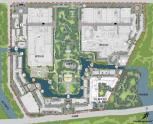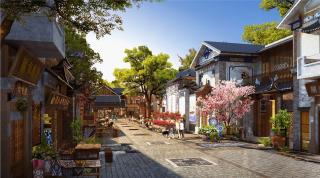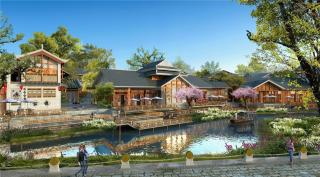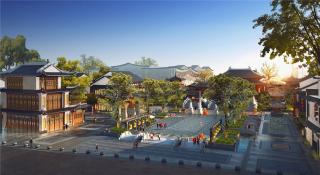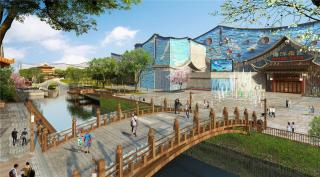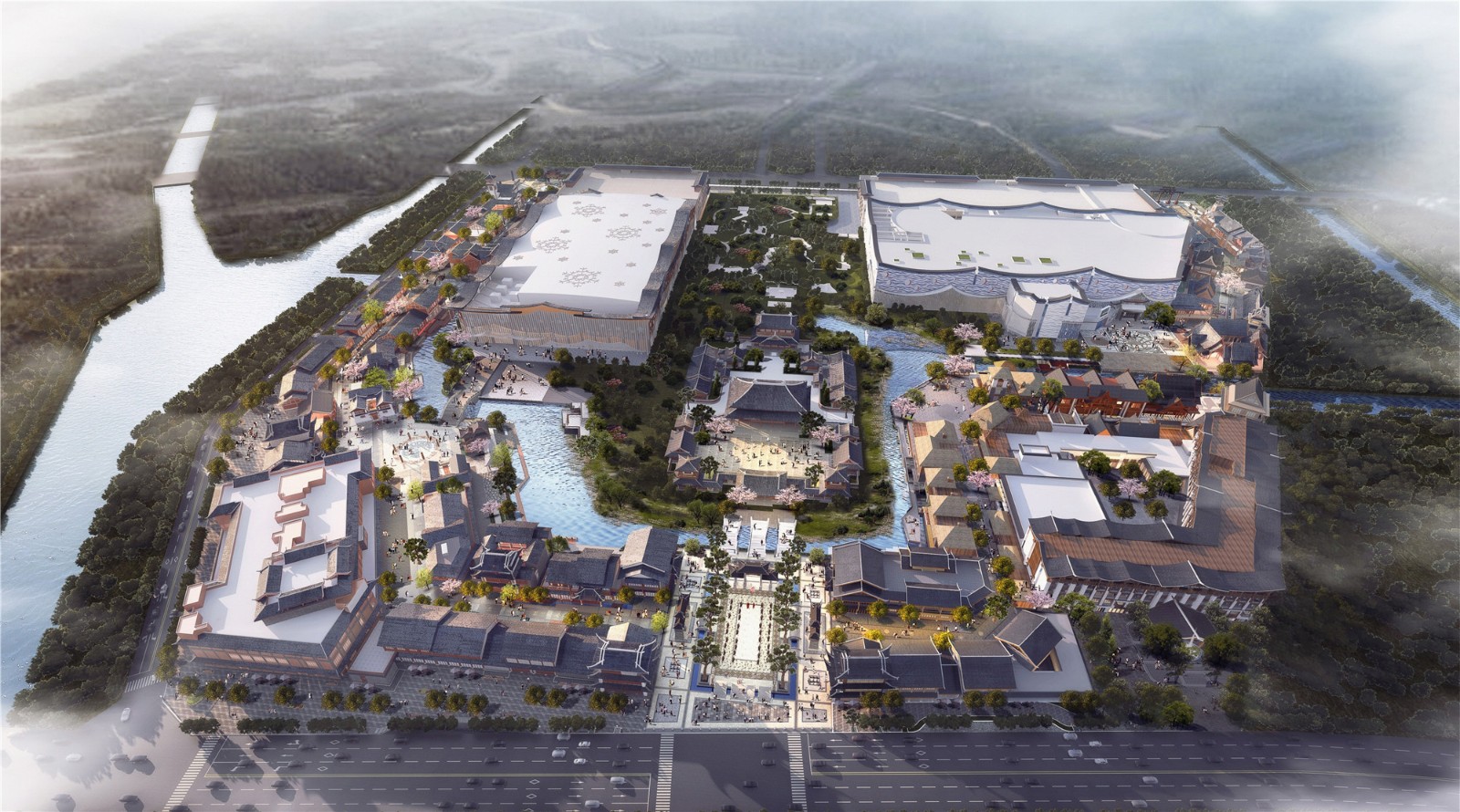
昆明位于中國(guó)西南云貴高原中部,南瀕滇池�,三面環(huán)山,是中國(guó)面向東南亞�����、南亞乃至中東��、南歐、非洲的前沿和門(mén)戶����。擁有2200多年的建城史,歷史悠久���,文化燦爛����。作為白����、苗、納西�、哈尼�����、傣�、彝等多民族匯集的城市,無(wú)論是其待人接物的禮儀���、風(fēng)味獨(dú)特的飲食����、絢麗多彩的服飾,還是風(fēng)格各異的民居建筑��,都能使人感受到鮮明的民族特色���。
Kunming is located in the central part of the Yunnan-Guizhou Plateau in southwest China. Its south connects to Dianchi Lake and three sides of it are surrounded by mountains. It is the forefront and gateway of China to Southeast Asia, South Asia and even the Middle East, southern Europe and Africa. With more than 2,200 years of history of the city, Kunming has a long history and brilliant culture. As a city where many nationalities such as Bai, Miao, Naxi, Hani, Dai and Yi gather together, people can feel Kunming’s distinctive ethnic characteristics from local people’s hospitality, distinctive flavors, colorful costumes and styles of dwelling houses.
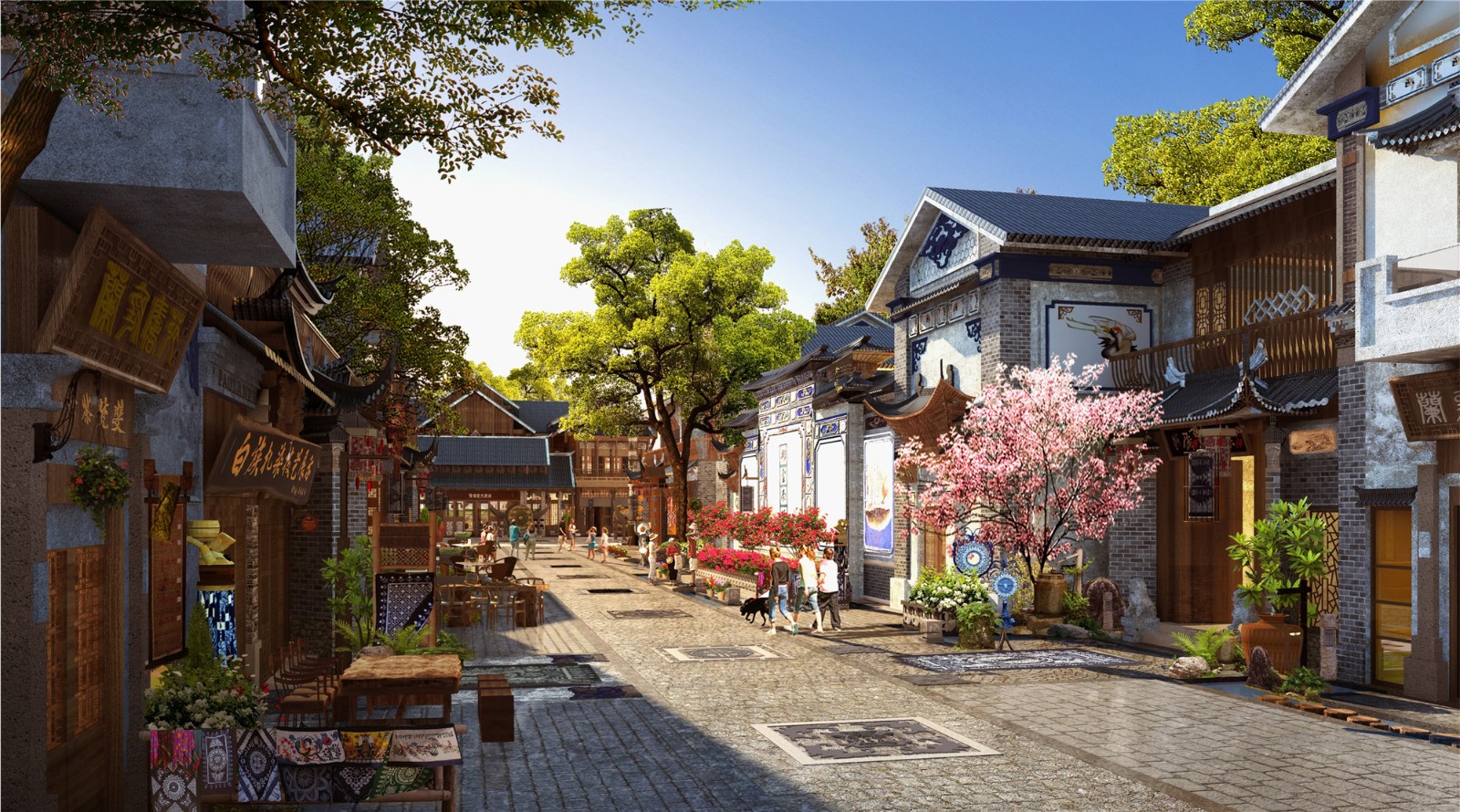
由畢路德攜手萬(wàn)達(dá)文旅傾心打造的昆明萬(wàn)達(dá)小鎮(zhèn)����,將不同民族文化遺產(chǎn)融入到小鎮(zhèn)的策劃創(chuàng)意中�����,利用商業(yè)的強(qiáng)大輻射力�,使小鎮(zhèn)煥發(fā)出新的生機(jī)和活力。
Kunming Wanda Small Town, which is invested and designed by Wanda Cultural Tourism Group and BLVD, integrates different ethnic cultural heritages into the town's creative planning and makes use of the powerful radiation power of business to bring the town new vitalities.

設(shè)計(jì)再現(xiàn)了千年錦繡昆明����,以云南民族特色為基礎(chǔ),以多民族景觀建筑為載體��,以探尋傳統(tǒng)手工藝為主線�,以觀光體驗(yàn)為主導(dǎo),休閑養(yǎng)生為輔助�����,將各具特色的民族風(fēng)情以及佛教文化融入到小鎮(zhèn)景觀中,打造具有藝術(shù)感染力和文化震撼力的場(chǎng)景�。
The design of Kunming Wanda Small Town reproduces millennium splendid Kunming. With Yunnan ethnic characteristics as the basis and multi-ethnic landscape architecture as the carrier, its design takes exploring the traditional arts and crafts as the main line, sightseeing as the guidance, leisure and healthcare as aids, to integrate the unique ethnic customs and Buddhist culture into the town’s landscape and to further create a scene with artistic appeals and cultural attracts.
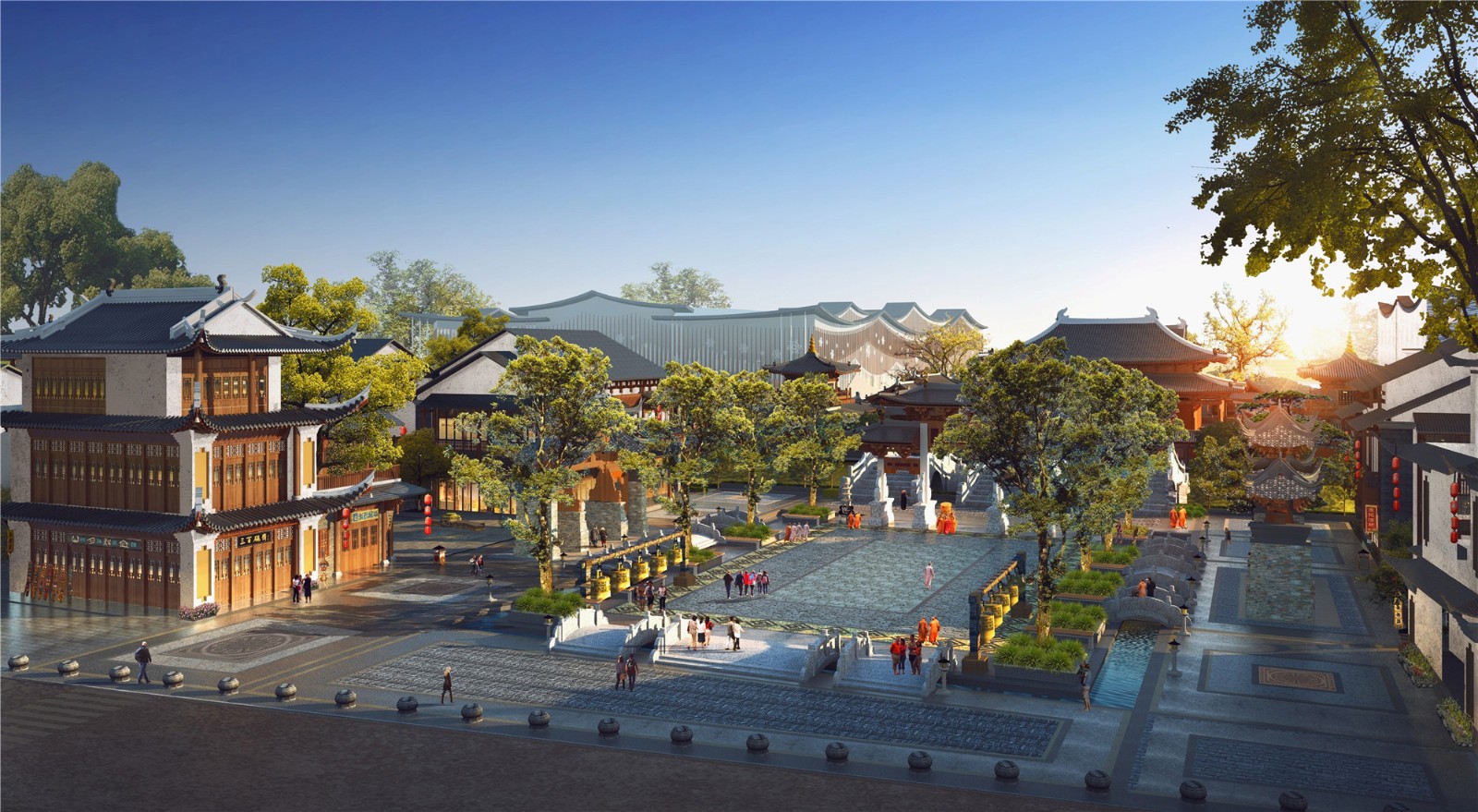
景觀規(guī)劃以積善廣場(chǎng)、覺(jué)海寺及寺廟背部的景觀形成中軸線����,空間序列清晰明了。民族分區(qū)從左至右依次為白族�����、苗族���、納西族��,積善廣場(chǎng)��、哈尼族、傣族和彝族����,構(gòu)建“鎮(zhèn)在園中、佳畫(huà)天成”的古風(fēng)詩(shī)意���。值得一提的是����,畢路德還通過(guò)創(chuàng)意表演活動(dòng)的策劃,集中展示扎染���、苗銀����、東巴木雕�、建水紫陶、葫蘆絲���、彝繡等各民族傳統(tǒng)工藝�,令小鎮(zhèn)融合觀賞�、互動(dòng)、體驗(yàn)�����、參與于一體���,創(chuàng)造“傳統(tǒng)工藝���、園中穿行”的旅游體驗(yàn)�����。
Landscape planning takes Jishan Square, Jue Hai Temple and the landscape at the back of the temple to form the axis, which shows the clear spatial sequence. Ethnic zoning from left to right are Bai, Miao, Naxi, Jishan Square, Hani, Dai and Yi in order, creating a poetic sentiment like "town in the garden; painting from heaven." It is worth mentioning that through the planning of creative performances and activities, BLVD also presents the tie-dye technique, Miao silver, Dongba wood carving, Jianshui purple pottery, Hulusi, Yi embroidery and other ethnic traditional crafts, so that the town integrates ornamental , interaction, experience and participation, to create the travel experience of "walking in the park of traditional crafts".

在大量實(shí)地的深入研究與分析之后�,南北兩側(cè)的駁岸地塊進(jìn)行了差異化的設(shè)計(jì)����。南側(cè)人流較大,空間受限����,結(jié)合小鎮(zhèn)業(yè)態(tài)功能的分布,設(shè)置成不同形式的親水平臺(tái)���、極具趣味性的退臺(tái)空間及入水臺(tái)階等形式豐富空間的硬質(zhì)駁岸���,令場(chǎng)地的商業(yè)價(jià)值得到最大化的體現(xiàn)。北側(cè)地塊則由于河道間距相對(duì)較寬�����,被打造成生態(tài)入水的自然駁岸�。
After a large amount of in-depth research and analysis, different designs are applied to revetments on north and south sides. The south side has a large flow of people with limited space. Based on the distribution of the functions of the small town, the design includes different types of hydrophilic platforms, interesting withdrawing space, inflow steps and so on to enrich the hard-texture revetments, which maximize the commercial value of the venue. While due to the relatively wide spacing between the rivers, the north side is designed as a natural revetment for ecological infiltration.
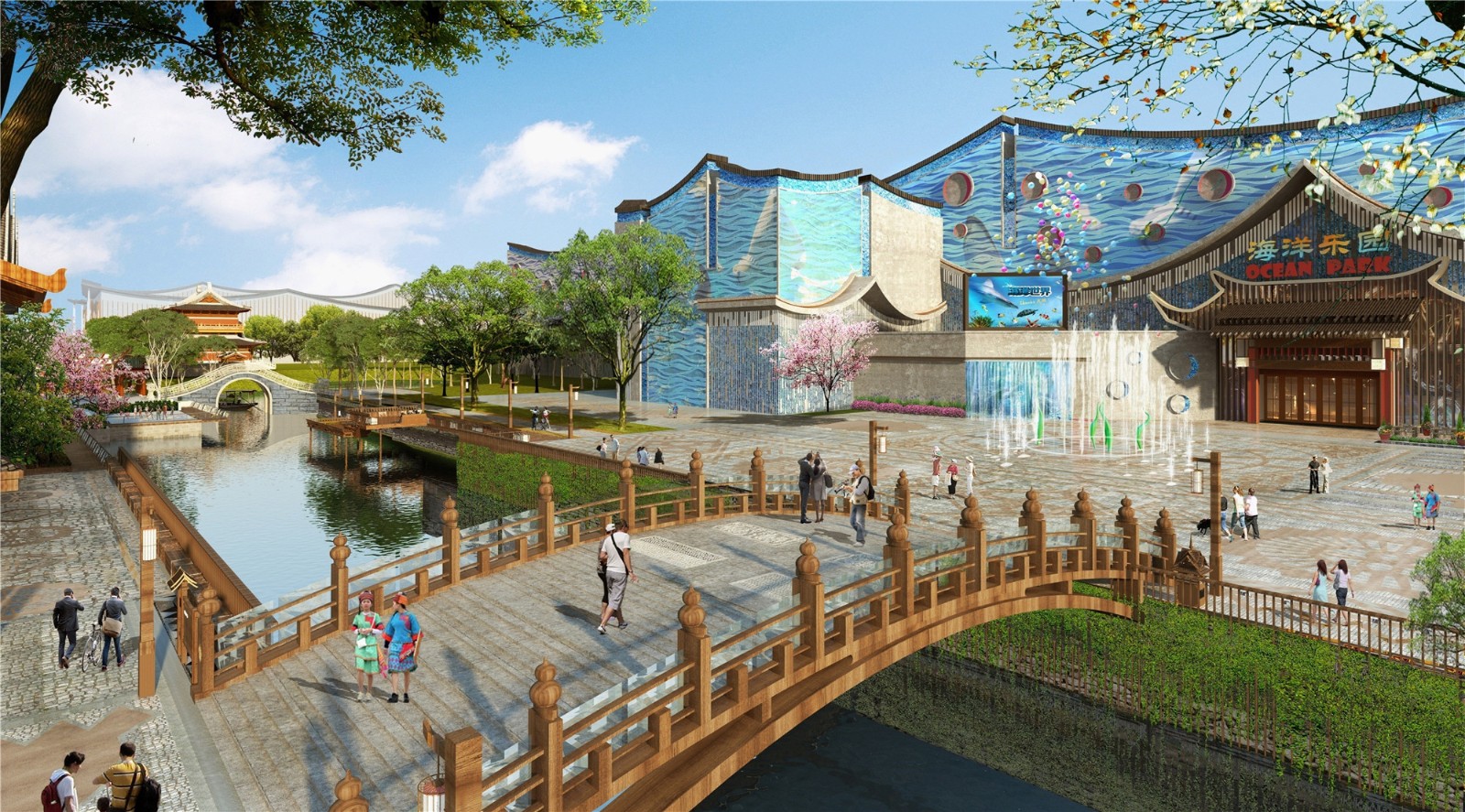
整體的設(shè)計(jì)創(chuàng)造了一個(gè)復(fù)合多元的旅游藝術(shù)高地,每一位游客既是鑒賞者��,又是體驗(yàn)者��,還是共同傳承民族文化瑰寶�����、完成民族特色作品的參與者���。
The overall design has created a diverse tourist art highland. Every visitor is a connoisseur, an appreciator and also a participant who inherits the national cultural treasures and completes the ethnic characteristic works together with others.
版權(quán)聲明:本文由畢路德國(guó)際于景觀中國(guó)網(wǎng)發(fā)布����,如需轉(zhuǎn)載請(qǐng)注明出處����。
投稿郵箱:contact@landscape.cn
項(xiàng)目咨詢:18510568018(微信同號(hào))
 京公海網(wǎng)安備 110108000058號(hào)
京公海網(wǎng)安備 110108000058號(hào)






